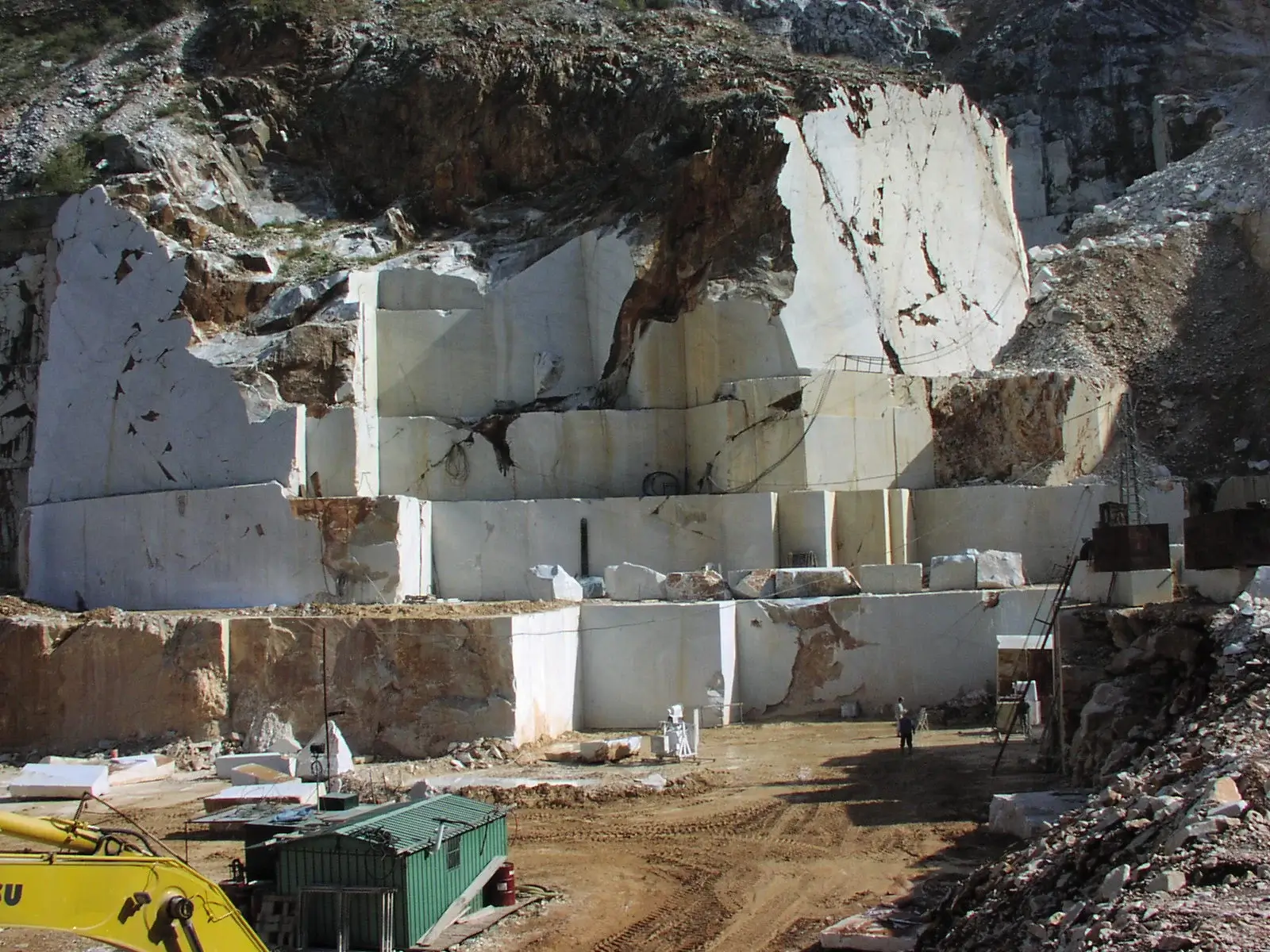Cave di Carrara
La catena delle Alpi Apuane oltre ad un ambiente naturale di incomparabile ed originale bellezza,
è un immenso giacimento di marmi, i più pregiati e famosi dei quali si trovano in tre Canali principali: Canali di Torano, di Miseglia, di Colonnata.
Complessivamente la massa marmorea «scavabile» a monte di Carrara ha, secondo gli esperti, una superficie di 67 kmq. ed un volume di 60 miliardi di metri cubi.
L’escavazione, il trasporto, la lavorazione: in queste tre fasi fondamentali della produzione marmifera si è sviluppata una lenta ma incessante ricerca «tecnologica» che ormai ha duemila anni di vita. Pochi altri settori industriali vantano un primato simile ed, in aggiunta a ciò, in pochi altri tipi di attività umana ogni conquista fu pagata a caro prezzo come lo fu nel mondo delle cave. In questa sezione si ripercorrono, sommariamente, le tappe di questo bimillennario cammino.

